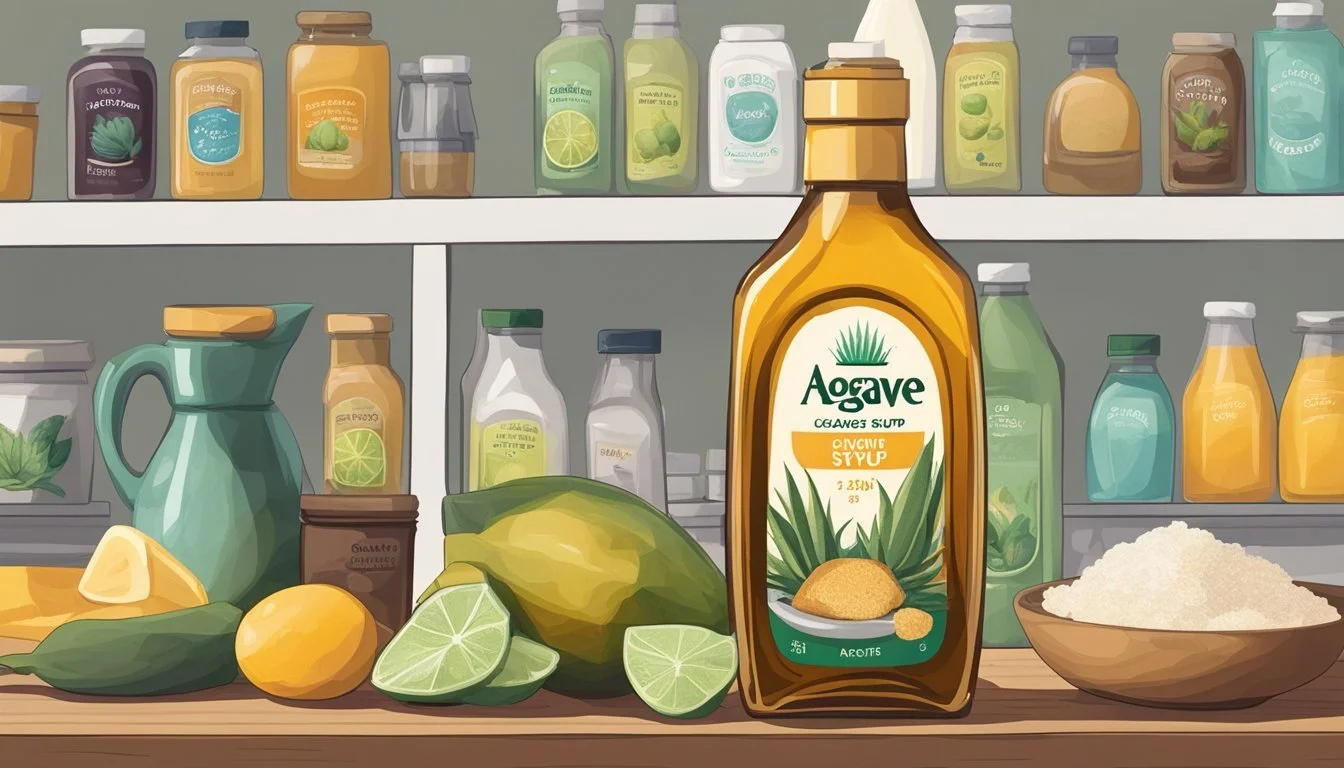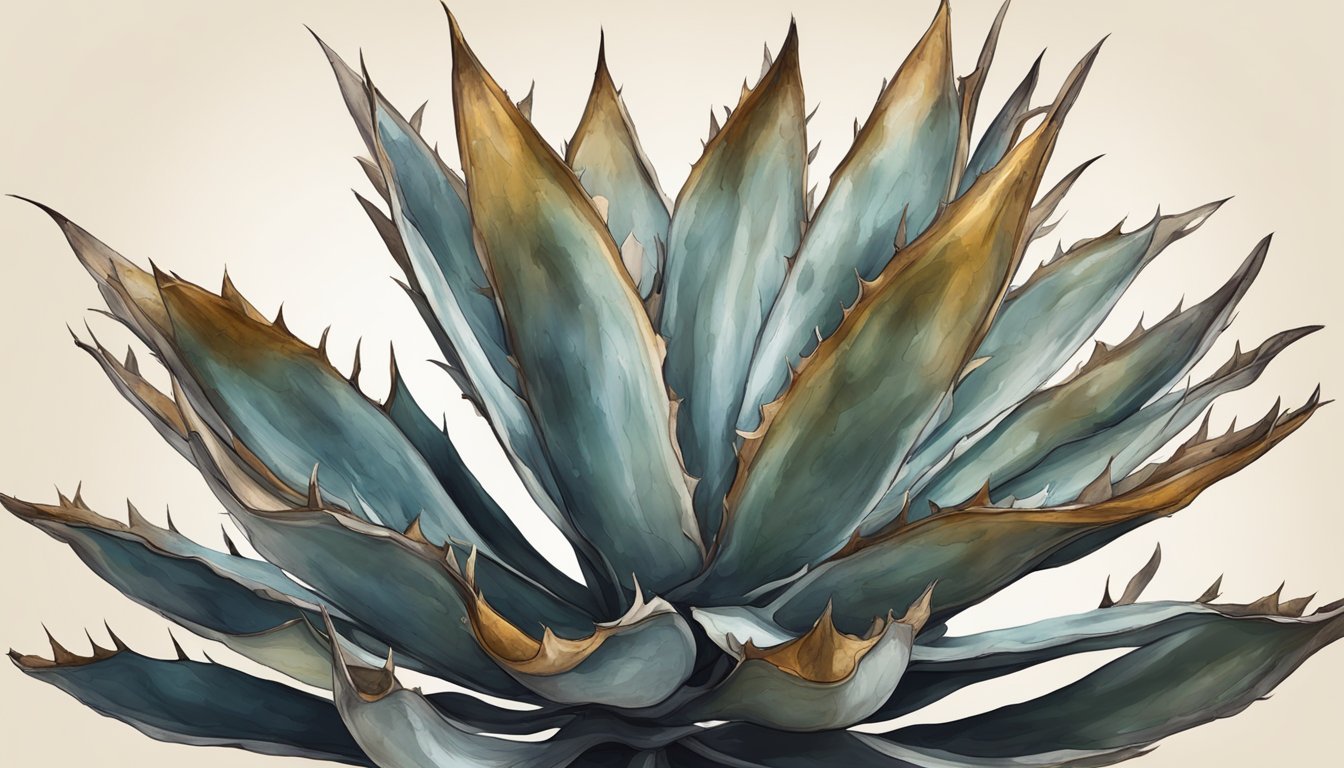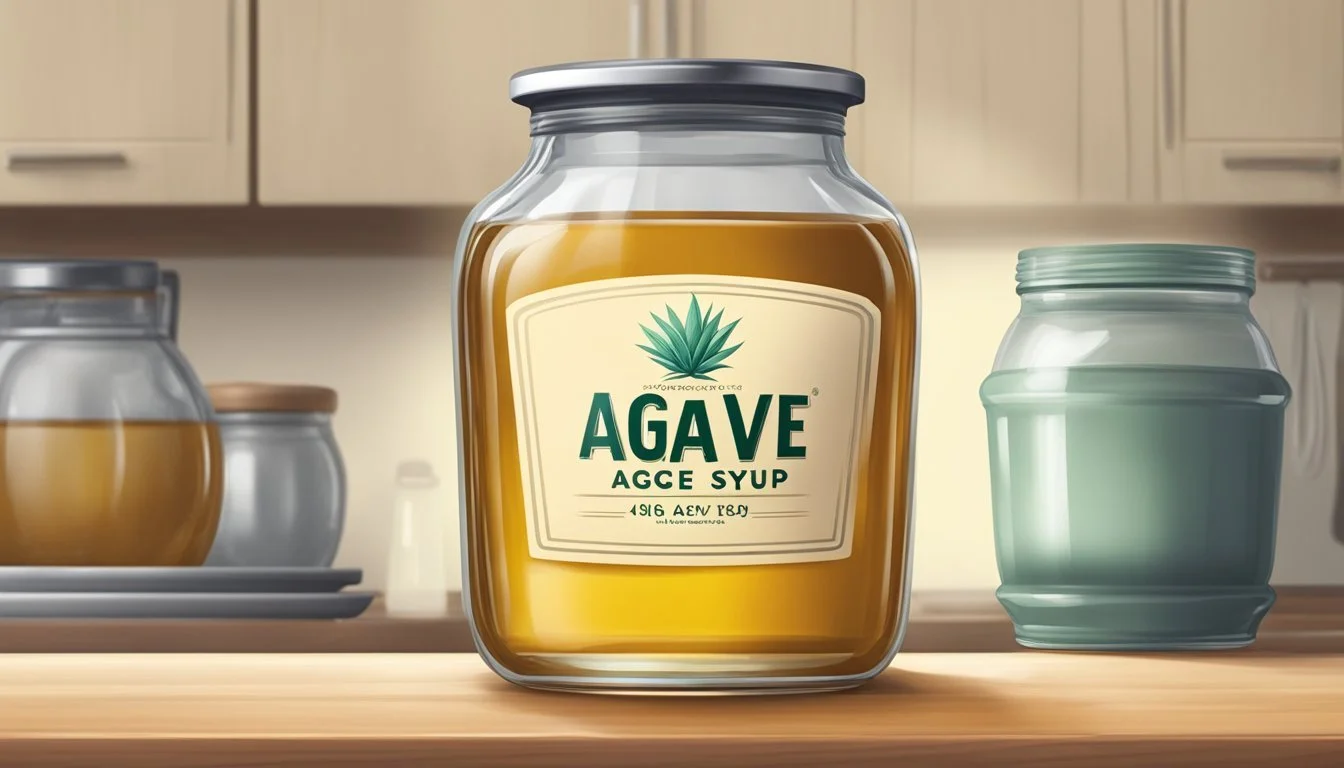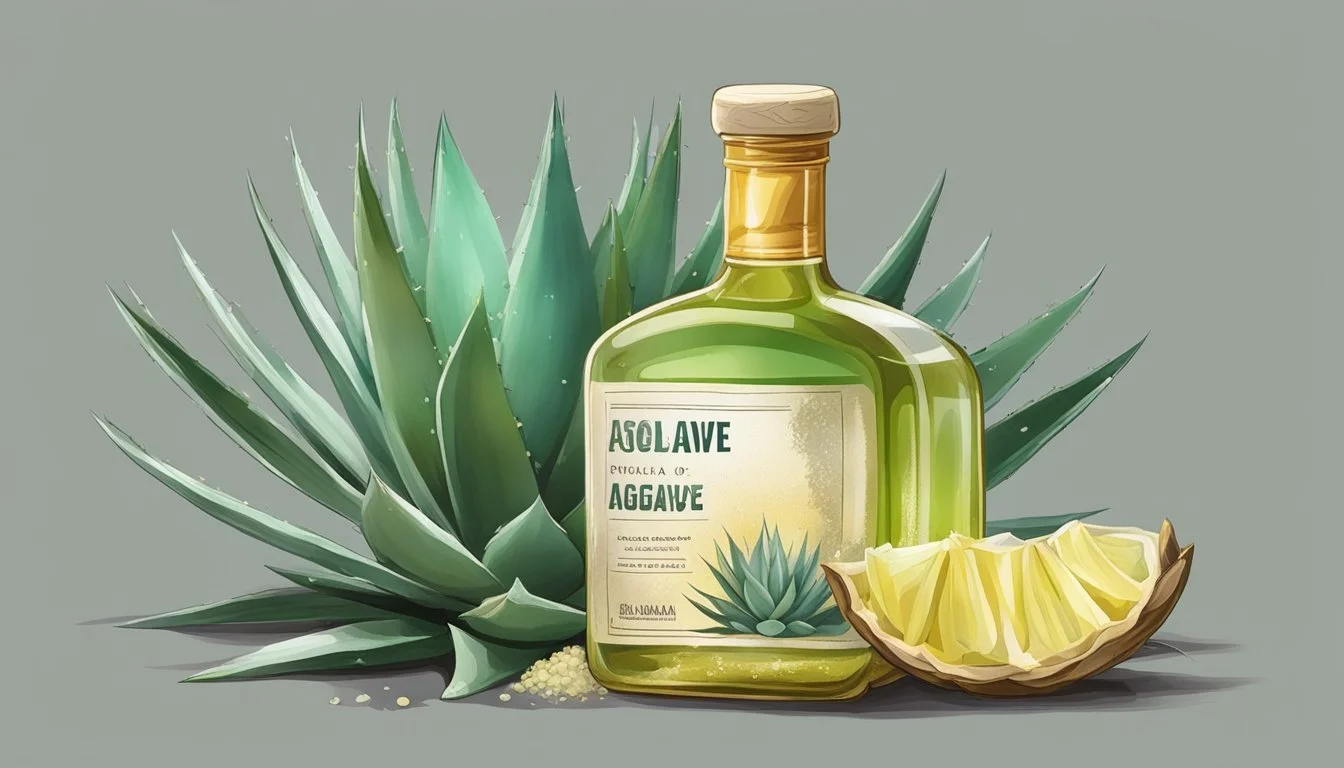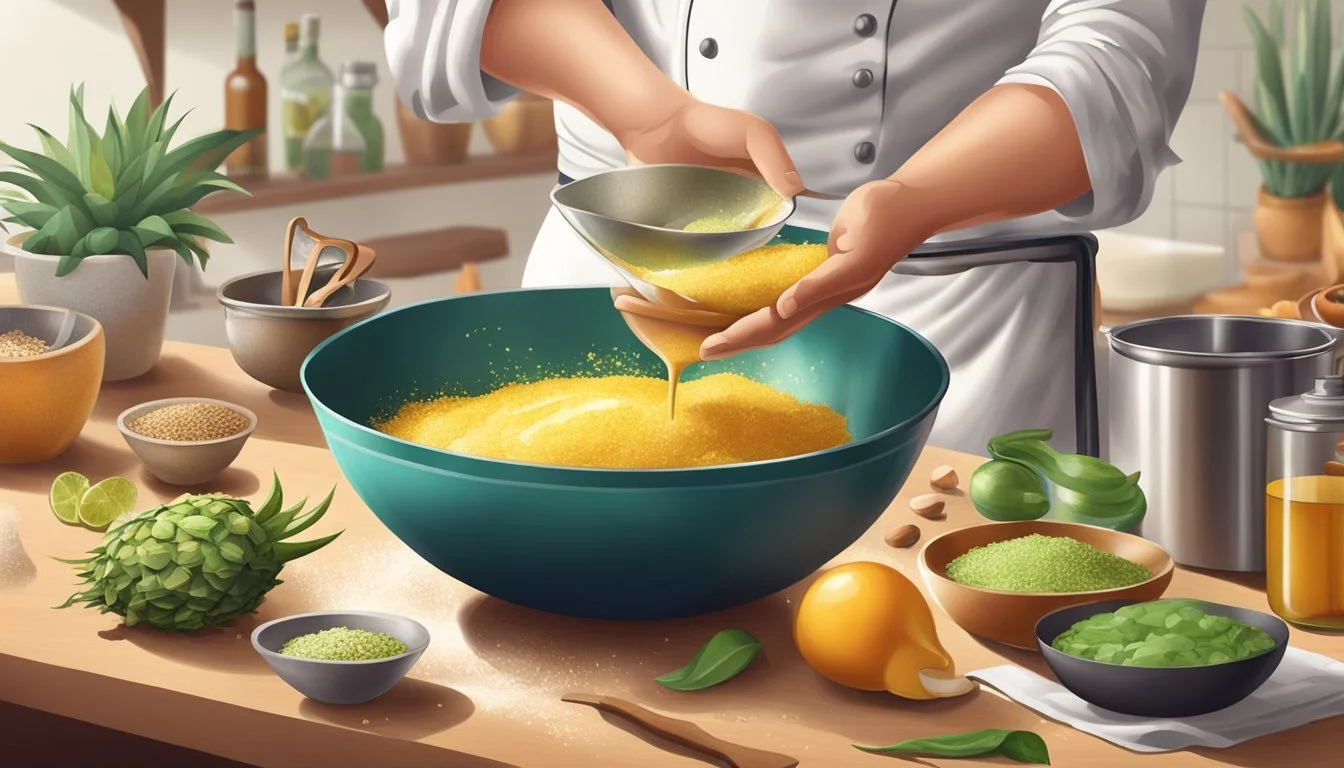Does Agave Go Bad?
Understanding Shelf Life and Storage Tips
Agave syrup, a natural sweetener derived from the sap of the agave plant, is a popular alternative to traditional sugar due to its sweet flavor and low glycemic index. Often used in food and beverages, it is renowned for its long shelf life compared to other sweeteners. The typical shelf life of agave syrup is around two years from the date of production. However, like many natural products, it is not immune to spoilage.
While agave syrup can last indefinitely if kept in the right conditions, certain factors can affect its quality. Proper storage plays a crucial role in preserving its lifespan. Agave syrup should be stored in a cool, dry place away from direct sunlight. If stored improperly, signs of spoilage such as an off-putting smell, change in color, or fermentation may occur. Consumers should always check for these indications before use to ensure the quality of the syrup.
What is Agave?
Agave is a versatile plant known for its sweet nectar used in culinary applications and its integral role in the production of tequila.
Agave Plant Origin
The agave plant is native to arid and semi-arid regions of Mexico and the southern United States. It is a succulent with a rosette of thick, fleshy leaves, known for its hardiness and ability to thrive in dry soil conditions. The species is diverse, with over 200 varieties, and while some are ornamental, others are cultivated for their sap.
Agave Nectar vs. Agave Syrup
Agave nectar and agave syrup are terms often used interchangeably to describe the natural sweetener derived from the sap of the agave plant. This sap is extracted, filtered, and heated at low temperatures to break down the carbohydrates into sugars. The main sugar in agave nectar is fructose, which gives it a low glycemic index and a sweeter taste than regular sugar, enabling users to utilize less for the same sweetness. Agave syrup is widely used as a vegan-friendly and plant-based alternative to honey and as a natural sweetener in beverages and recipes. It has gained popularity due to its lower impact on blood sugar levels compared to other sweeteners.
Agave Syrup Properties
Agave syrup, also known as agave nectar, is a natural sweetener with unique physical characteristics and nutritional values that distinguish it from other sweeteners.
Physical Characteristics
Agave syrup is notable for its viscous texture and golden to dark amber color, depending on the degree of processing. The syrup's consistency is similar to that of honey, but it can be slightly thinner. When it comes to taste, agave nectar boasts a mild flavor profile that is less pronounced than the complex tones found in honey, which allows it to blend seamlessly into various foods and beverages without altering their original flavor.
One of the key features of agave syrup is its high fructose content, which can range around 56% for blue agave varieties. This high fructose concentration gives agave syrup a sweeter taste compared to regular table sugar. Consequently, it often requires less quantity to achieve the same level of sweetness, which may influence recipes and dietary considerations.
Nutritional Value
From a nutritional standpoint, agave syrup predominantly consists of carbohydrates, mainly in the form of sugars. It is low in fiber, vitamins, and minerals, although some variants may contain trace amounts of iron. Its nutritional profile is primarily characterized by its sugar composition. Due to the high percentage of fructose in agave syrup, it has a lower glycemic index than sucrose, meaning it does not cause rapid spikes in blood sugar levels. This property makes it a popular choice among individuals looking for sweeteners that have a more gradual impact on blood sugar.
While agave syrup provides a sweet taste, consumers should be aware that it is still a sugar-rich food and should be used in moderation within a balanced diet.
Shelf Life of Agave Syrup
Agave syrup, a natural sweetener, is known for its relatively long shelf life. This durability can be attributed to its high fructose content, which acts as a natural preservative.
Unopened Bottles
When agave syrup is kept in its original, unopened bottle, it can last approximately two to three years. Ensuring that the product is stored in a cool, dry place away from direct sunlight helps to maintain its quality for the longest possible time. Manufacturers typically provide an expiration date, but agave syrup can remain safe to consume beyond this date if stored properly.
After Opening
Once opened, the longevity of agave syrup's quality depends on storage conditions. To best preserve its flavor and prevent spoilage, it's advisable to store the syrup in an airtight container in a cool, dry place or at room temperature. When stored correctly, opened agave syrup often maintains good quality for an indefinite shelf life. However, for optimal taste, consumers should consider using it within a reasonable time frame following opening.
Signs of Spoilage
When assessing agave for spoilage, one should look for specific visual cues and changes in odor and flavor, as these are the primary indicators of degradation.
Visual Indicators
Color: Agave syrup that is spoiling may exhibit changes in color. A natural amber hue is typical, but a noticeable darkening implies deterioration.
Mold: The presence of mold growth is an unequivocal sign of spoilage. If mold is observed on the surface or within the syrup, it is unsafe for consumption.
Odor and Flavor Changes
Smell: A fresh bottle of agave should have a mild, sweet aroma. The development of an off odor, often described as fermented or unusual, is a strong indicator that the agave syrup is no longer good.
Flavors: Agave that has started to spoil might also exhibit a noticeable change in flavors. Any sour taste or deviation from its usually sweet flavor profile suggests spoilage.
Storing Agave Syrup
Proper storage of agave syrup is crucial to maintaining its quality and extending its shelf life. By controlling factors such as light, temperature, and moisture, one can ensure the syrup remains in its best condition for consumption.
Ideal Storage Conditions
Agave syrup thrives in cool, dry places away from direct sunlight and heat. This is to prevent degradation of the syrup's natural properties and to maintain its sweetness. The specifics are:
Temperature: It should be stored at room temperature, ideally between 60°F to 78°F (15°C to 25°C).
Light: A cupboard or pantry is perfect to shield it from light which can cause deterioration.
Moisture: Low humidity is preferred as excessive moisture can lead to spoilage.
Extending Shelf Life
To keep agave syrup at its best after opening, follow these measures:
Refrigeration: Although not mandatory, storing agave syrup in the refrigerator can extend its shelf life once opened.
Sealing: Always tightly seal the container to prevent exposure to air which can introduce contaminants.
Freezing: For long-term preservation, one can transfer agave syrup into a freezer-safe container. This will prevent freezer burn and avoid quality degradation.
By adhering to these storage instructions, consumers can enjoy the natural sweetness of agave syrup for an extended period while preserving its quality.
Potential Risks of Spoiled Agave
Spoiled agave nectar can present real health hazards due to contamination which may include the presence of bacteria and mold. Below are the specific risks associated with consuming spoiled agave.
Health Implications
Spoiled agave nectar can contain harmful bacteria and mold growth, which pose serious health risks if ingested. The following list outlines potential health implications:
Foodborne Illness: Bacteria found in contaminated agave can cause food poisoning, with symptoms such as nausea, vomiting, and diarrhea.
Allergic Reactions: Mold in agave nectar may trigger allergic responses in some individuals, ranging from mild respiratory issues to severe reactions.
Food Safety Considerations
When it comes to food safety, understanding and recognizing signs of spoilage in agave is crucial. Proper storage is essential to reduce the risk of spoilage. Here are key considerations for maintaining the quality of this sweetener:
Store Properly: Keep agave nectar in a cool, dry place, away from direct sunlight.
Visual Inspection: Look for any changes in color, the presence of mold, or any off-putting smell before use.
Texture Changes: An altered viscosity or a grainy texture can indicate spoilage.
Best By Date: While not an absolute indicator, the best by date can be used as a reference for peak quality.
Using Agave in Cooking
Agave syrup serves as a versatile and natural sweetener, easily incorporated into various culinary preparations due to its sweet flavor and low glycemic index. It can replace traditional sugar thereby providing a desirable sweetness to beverages and culinary dishes without spikes in blood glucose levels.
Sweetener in Beverages
Agave syrup is a popular choice for sweetening beverages, from hot drinks like tea and coffee to cold refreshments including lemonades and smoothies. Its solubility is a notable attribute, making it an excellent alternative to sugar, which can be difficult to dissolve, especially in cold drinks.
Tea and Coffee: Add to taste, starting with a teaspoon per cup.
Cold Beverages: Mix in until desired sweetness is achieved; the syrup blends smoothly without residue.
Baking and Cooking Recipes
Agave syrup can be used in baking and cooking, acting as a substitute for sugar. Its ability to add moisture to baked goods and dishes is particularly valuable. It can be stored in the pantry, often in a bottle, and should be used in moderation due to its high fructose content.
Baking:
Replace 1 cup of sugar with 3/4 cup of agave syrup.
Reduce other liquids in the recipe by 1/4 to adjust for the extra moisture agave provides.
Cooking:
Incorporate into sauces and glazes for a touch of sweetness.
Utilize it in marinades to enhance the flavor of various dishes.
Substitutes and Alternatives
When agave sweetener is unavailable or someone seeks an alternative, several substitutes offer similar sweetness levels and can be used in various dishes. Choosing the right alternative depends on the desired flavor profile and usage in recipes.
Comparing Sweeteners
Honey: Often recommended as the closest alternative to agave, honey provides a similar degree of sweetness and a floral note. Its thicker consistency can be taken into account when measuring for a 1:1 substitution in recipes.
Flavor: Floral notes with a mild to strong sweetness depending on the variety
Best for: Baking, dressings, teas, and as a direct sweetener
Maple Syrup: Maple syrup can be a suitable substitute, offering a distinctive flavor. It’s less viscous but can replace agave in a 1:1 ratio.
Flavor: Rich and woodsy with a slight caramel taste
Best for: Pancakes, waffles, oatmeal, and baking
Granulated Sugar: While not as syrupy, sugar can sweeten with a 4:1 conversion ratio (4 teaspoons of sugar for every tablespoon of agave). Additional liquid may be required in recipes to achieve the desired texture.
Flavor: Neutral sweetness
Best for: General cooking and baking where liquid consistency is not critical
High-Fructose Corn Syrup: With a similar consistency and sweetness level, this syrup is an option though often considered less healthy.
Flavor: Mild and sweet
Best for: Candies, jams, and commercial food products
When to Use Other Sweeteners
Substitutes for agave should be chosen based on the recipe's needs and the desired outcome.
For baking, honey and maple syrup can provide moisture along with sweetness. They also contribute distinct flavors, which can enhance the final product. Adjust liquid content in the recipe if needed.
For sweetening beverages, granulated sugar or honey are commonly used as they dissolve well, though maple syrup can add an interesting flavor twist.
In candy making, a direct replacement like high-fructose corn syrup might be important for the texture, while in fruit compotes or desserts, one may opt for the subtle flavors of maple syrup or honey to complement the dish.
Frequently Asked Questions
Does Agave Nectar Expire?
Yes, like any other food product, agave nectar does have an expiration date. While it typically has a long shelf life due to its high fructose content serving as a natural preservative, it can still deteriorate over time.
How Can I Tell if Agave Nectar Has Gone Bad?
Signs of spoilage include:
Odor: Off-putting, fermented smell indicates spoilage.
Color: Any darkening beyond its natural amber hue suggests degradation.
Texture: If the syrup becomes cloudy or you notice crystallization, these are signs of quality change.
What Are Proper Storage Conditions?
Store agave syrup in a cool, dry place. Temperature fluctuations and exposure to heat can compromise its quality, so avoiding these conditions is crucial for maintaining its shelf life.
Can You Freeze Agave Syrup?
Freezing is not recommended as it can alter the flavor and texture. However, it can be kept in a cool environment, such as a refrigerator, especially after opening.
Is Agave Syrup Vegan?
Agave nectar is derived from the sap of the agave plant, making it a vegan sweetener option.
Does Agave Syrup Contain Preservatives?
Typically, agave syrup does not contain added preservatives as its high fructose content acts as a natural preservative to inhibit bacterial growth.
How Does the Shelf Life Differ Between Opened and Unopened Bottles?
An unopened bottle of agave nectar can last well beyond the expiration date if stored properly. Once opened, it's recommended to use within 6 months for optimal flavor and food safety.



